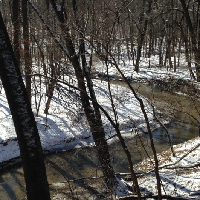Watershed Planning Update
An update on our watershed planning efforts is long overdue. Our NRCS Conservation Innovation Grant for the “Keigley” watershed project wrapped up in September of 2018. Here’s some of the highlights from 2017-2018 and what we’ll be doing next.
A change in focus: No more need to explain that by “Keigley Branch Watershed” we really mean “part of the South Skunk River.” In the future, we’ll be working with the entire 200,556-acre watershed that drains to the South Skunk River above the confluence with Squaw Creek in Ames. On paper, a single ten-digit hydrologic unit (HUC10) seemed like a more manageable project, but as we talked with the public it became clear that watershed plans and partnerships would be more effective if the river’s headwaters in Hamilton County were included sooner rather than later.
A new Watershed Management Authority (WMA): The Headwaters of the South Skunk River WMA was formed in August 2018 with seven signatories:
- Story County Supervisors
- Story County Soil & Water Conservation District
- Hamilton County Soil & Water Conservation District
- City of Ames
- City of Story City
- City of Roland
- City of Randall
We hope more jurisdictions will join as the partnership takes shape. Good communication between the cities, counties, and conservation districts in a watershed leads to more and better projects that improve water quality and soil health.
Great public input: 80 people—56 residents, 15 high school students, and 9 ISU students—attended our public workshops. The goals and implementation strategies they suggested will provide a great starting point for the WMA to develop an actionable plan for conservation in the Headwaters of the South Skunk River watershed.
An interactive map of conservation opportunities: Between this project and Story County’s assessment of its watersheds, we have identified suitable spots for bioreactors, grassed waterways, constructed wetlands and other agricultural conservation practices across 728,144 acres! Check out our interactive map to get ideas for conservation practices that might work on your farm or in your watershed, along with an explanation of each practice.
Winter is a busy season for grant-writing. We are currently looking for funding to provide education and technical assistance to farmers and landowners in this watershed, to build partnerships with more groups in Hamilton County, to fill in missing information identified during the planning process, and to support the new WMA in completing a plan for the Headwaters of the South Skunk River watershed. This is just the beginning!






